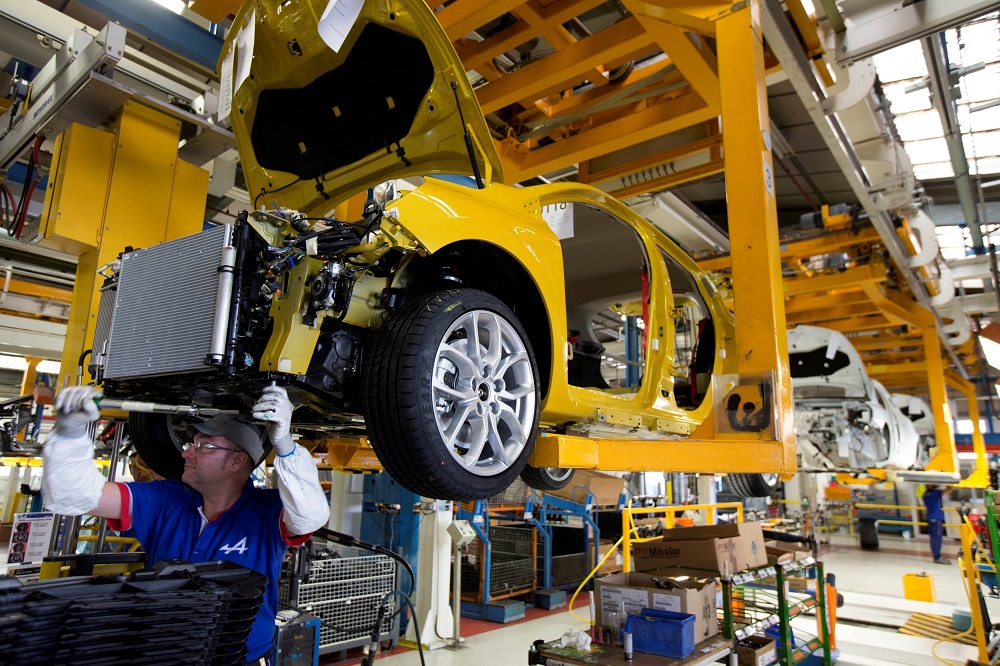Headwinds for the Eurozone economy
From skyrocketing inflation to possible gas shortages in winter, a range of factors is testing the resilience of the Eurozone economy.

Despite all the gloom, the Eurozone grew at 0.7% in Q2 2022 relative to Q1, which is higher than most forecasters’ expectations.
Disruptions caused by the ongoing war in Ukraine, surging energy prices, persistently high inflation, and the looming risk of Russia cutting off gas supplies in the winter months have put the Eurozone economy under an unprecedented level of stress. Despite all the gloom, the Eurozone grew at 0.7% in Q2 2022 relative to Q1, which is higher than most forecasters’ expectations. This positive growth also means that the Eurozone managed to escape the downturn that hit markets such as the United States and China during the same period, primarily because of the rebound seen in tourism in Italy and Spain. Manufacturing, however, continued to suffer from supply chain challenges.
The strong headwinds for economic growth are likely to continue in the second half of the year—in all likelihood, these headwinds might become even stiffer. The high degree of uncertainty following Russia’s invasion of Ukraine and high inflation have strained the consumer sector, which was originally supposed to drive the recovery in 2022. Current consumer sentiment data suggests that even the stable labor markets and additional savings from the pandemic will likely not be enough to offset these negative influences. Moreover, the interest-rate turnaround by the European Central Bank (ECB) has created a new monetary policy environment in the Eurozone and unexpected political events such as the snap election in Italy in autumn have added to political uncertainties. Nevertheless, we do not consider a recession the baseline scenario for 2022 and 2023. The tail risk of an immediate and complete stop of Russian gas supplies, however, could very likely change that outlook.
Uncertainty depresses economic sentiment
The aforementioned adverse factors have contributed to a record level of uncertainty in the Eurozone. The economic policy uncertainty index, a newspaper-based indicator for measuring uncertainty, reached a new peak following the war in Ukraine and continues to remain elevated.
This persistent uncertainty has also shaped economic sentiment in the region. The European Commission’s economic sentiment indicators took a dive in July and now stand below its long-term average. Industrial and services sector confidence declined substantially despite the expectation that consumers will start to spend savings accumulated during the pandemic.
One key reason for the decline is the drop in consumer confidence. In fact, the flash consumer confidence indicator for the Eurozone reached its lowest level on record in July. Consumer confidence now is considerably lower than during the first wave of COVID-19. Even though a strong labor market stabilizes incomes and accumulated additional savings from the pandemic contribute to strong balance sheets, inflation and uncertainty have substantially deterred consumers from spending.
Record inflation and monetary policy changes
The summer brought considerable challenges, especially for monetary policy in the Eurozone. Inflation reached a record level, rising to 8.9% in July. Energy prices rose by almost 40% year on year, while food prices rose by almost 10%. The Baltic States—Estonia, Lithuania, Latvia—saw an inflation rate in excess of 20%, the highest in the region. Inflation rates in Spain and the Netherlands stood at 11% and 12%, respectively. Among the largest Eurozone economies, France with 6.8% experienced the lowest inflation, while prices in Italy and Germany rose by around 8.5%. In Germany, temporary political measures reduced public transport ticket prices and the gasoline tax, which means actual inflation would probably be even higher.

In this high-inflation environment, the ECB changed course and increased interest rates for the first time in 11 years. The 50-basis-point rate hike in July was larger than originally expected and brought the deposit rate out of negative territory to zero percent. Further increases are expected in autumn. This implies that the extended period of monetary policy at the zero lower bound is over and that companies in the Eurozone now need to prepare and adjust to rising interest rates.
Rising rates also brought the spreads between German government bonds and the bonds of highly indebted Eurozone members into the limelight. The spread between German and Italian bonds rose to almost 250 basis points, leading to an emergency meeting of the ECB governing council. To counteract the widening spreads, the ECB introduced a new antifragmentation tool, called the transmission protection instrument (TPI). The TPI allows the ECB to buy bonds from countries that see their borrowing cost shoot up without any fault of their own, provided that they follow sound economic policies. The question going forward is how the ECB determines what share of the spread is unjustified (i.e., not driven by economic fundamentals) and needs to be corrected through new bond purchases.
Recession or not
Despite the tumultuous economic environment, the baseline scenario for the Eurozone economy surprisingly looks quite positive at first glance. In its latest forecast, the European Commission foresees a growth rate of 2.6% for 2022. Inflation is assumed to reach 7.6% on average. However, a substantial part of the projected growth rate is likely due to statistical carry-over effects from last year.
There are, however, considerable risks for this baseline outlook. These include a potential recession in the United States and a slowdown in China, larger-than-expected monetary tightening in the face of high inflation, or even higher energy and commodity prices. Perhaps the greatest risk for the baseline scenario comes from a possible cut-off of Russian gas supplies. While dependence on gas in general and Russian gas, in particular, varies widely across Europe, a total cut-off of Russian gas would severely affect several countries in Central and Eastern Europe, especially Hungary, the Czech Republic, Slovakia, Germany, and Austria. On the other side of the spectrum, countries such as Portugal, Spain, or France would be less affected.
In a recent study, the International Monetary Fund (IMF) calculated the potential effects of a complete and immediate stop of Russian gas supplies on the economies in the Eurozone. Key results of the study show that over the next 12 months, the European Union would lose 1.8 percentage points of GDP growth compared to the baseline scenario. The most affected countries would lose between two and more than four percentage points.
Obviously, these calculations represent a worst-case scenario for the Eurozone. Whether they become a reality depends on critical assumptions about demand and other factors, including the steps European economies take to tackle this challenge. These include political decisions regarding the redistribution of energy among European countries, the amount of energy savings, the feasibility of substituting gas with other energy sources such as oil in industrial production, substitutions within value chains, and the speed at which new LNG gas terminals can be built.
At the start of the year, the Eurozone was gearing up for a strong economic upswing in 2022. Instead, it finds itself in a stagflationary environment with multiple downside risks. Stagflation does not necessarily imply stagnation, but definitely slowing growth in a high-inflation environment. In fact, the IMF recently called the current situation perhaps the biggest test for Europe since the Second World War. How well the region fares is ultimately a question of how resilient it remains in the face of mounting economic headwinds.








